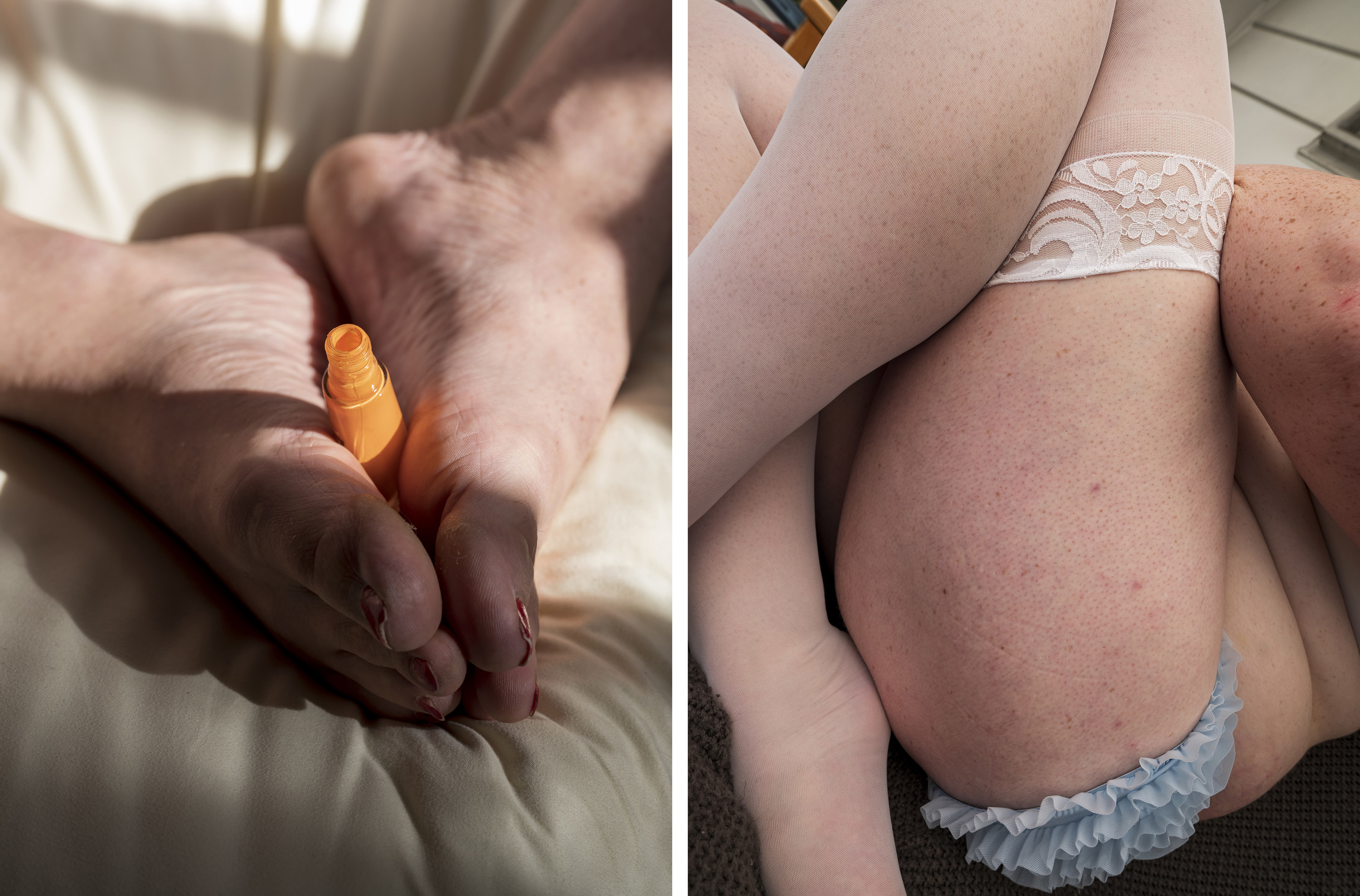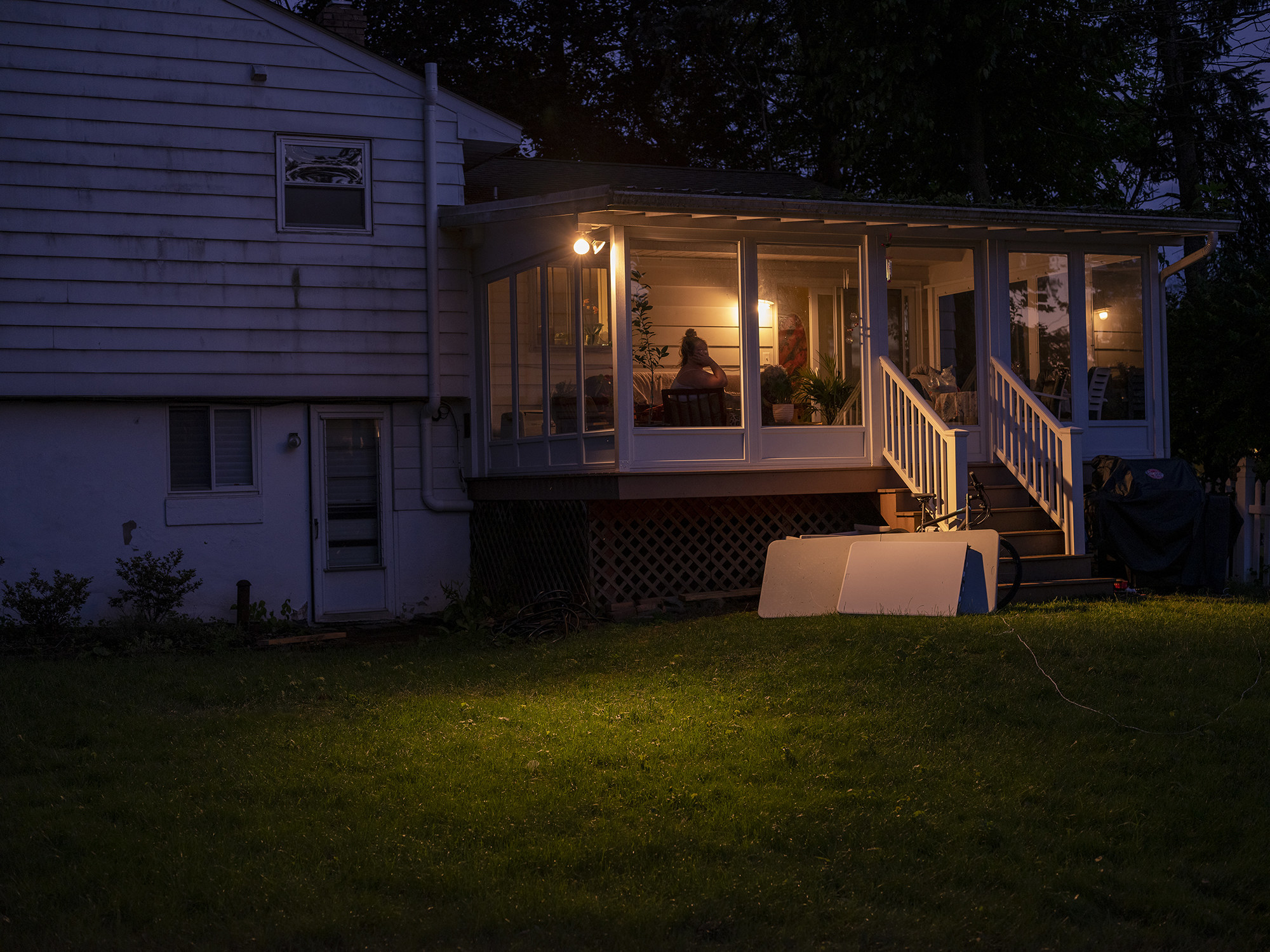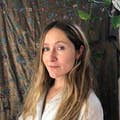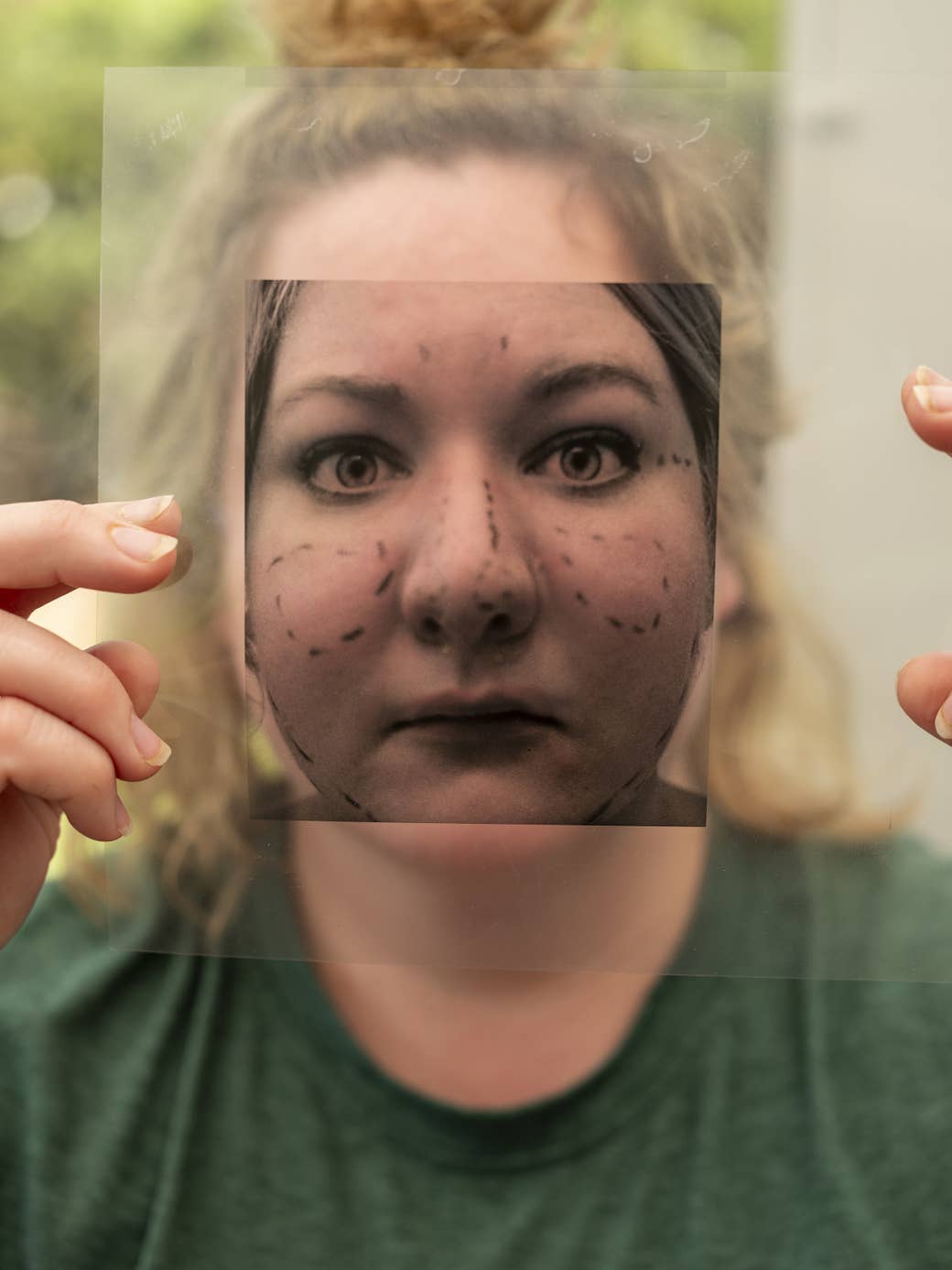
When I first came across Isla Gordon and Ashley Kaye’s work in 2021, it stopped me in my tracks. Their photos are personal and relatable despite being about a very individual experience — how a couple and a home changes as both partners explore their gender identity.
The two are partners in life and art — but life came first. They met at a camera store in 2011, quickly fell in love, and were married four years later. They have both used photography as a way to figure out domestic spaces and how they fit within the wider world. During the pandemic, both lost their jobs and their studios, and then left their home to live with family. Isla realized that she was transgender and began transitioning in 2020.
Their images explore themes of searching, piecing pieces of a larger puzzle together around gender roles and their experiences living as different genders. Photos such as Isla naked on the lawn, covered in grass, or drinking a beer and working at her laptop outside in a lawn chair, speak to the realities of their nuanced domesticity. The images are a beautiful and interesting look at how we navigate traditional gender roles in our lives. Many of the questions raised within their work came about as Isla transitioned and as they went through life changes brought on by the pandemic.
Their work will be on display in November in Re-form, a web exhibition publication from Stay Home Gallery, and in December at Satellite Art Show and Performance Is Alive at Miami Art Week, as well as at Illuminate Art Walk in Raleigh, North Carolina.
Ashley, who came out as nonbinary over the last year, and Isla both spoke to us about their work, balancing life and art, and the new home in Pennsylvania they moved into this year.
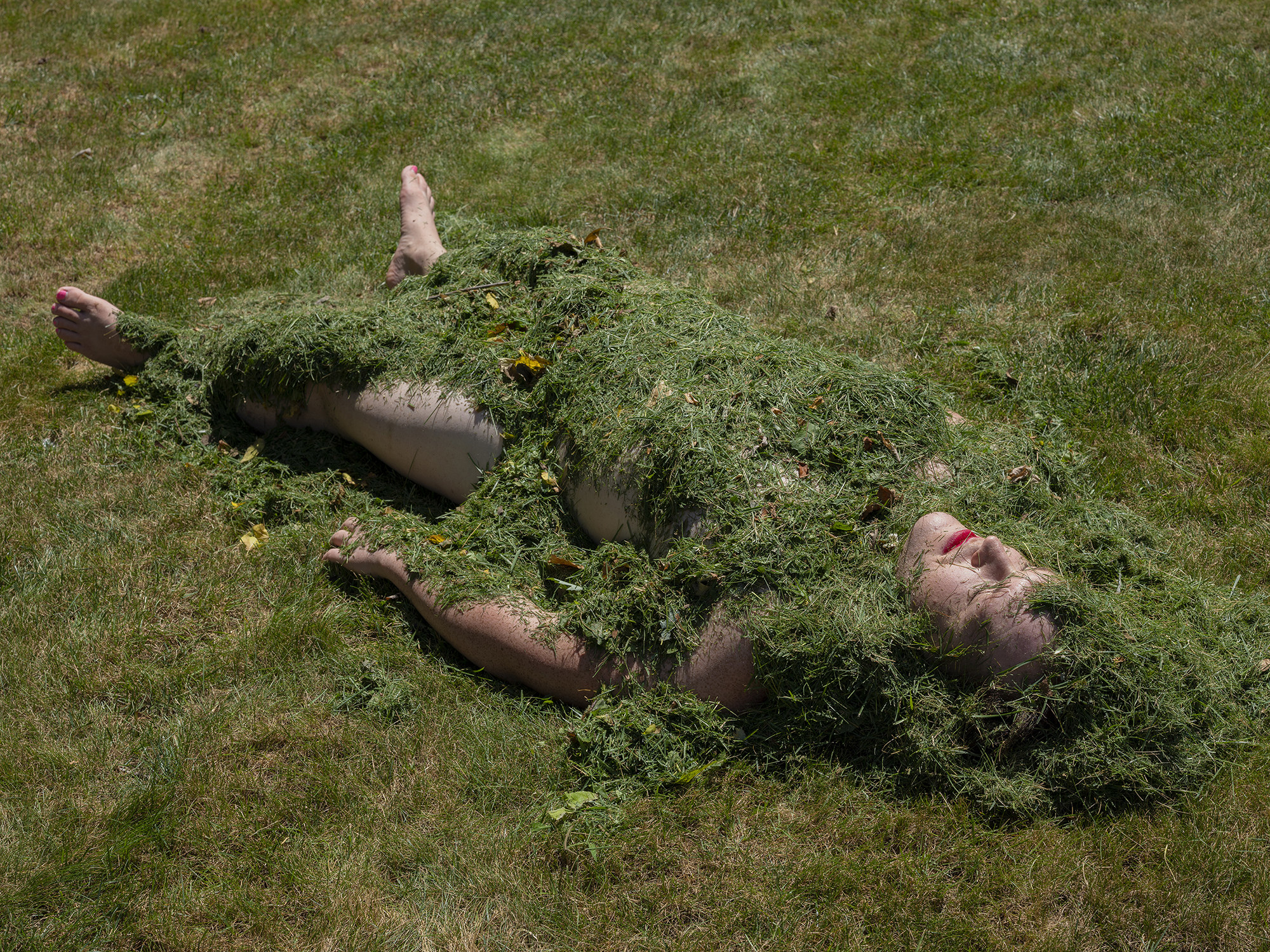
Isla Gordon: The project we’ve been working on most recently is called Starter Home. I have a colleague who has called it “elevated documentary,” but Ashley doesn't love that word. It's a project documenting our lives in the most honest way. I chose the name Starter Home because a starter home is a weird, untenable thing. It's a new beginning, but it's temporary. You have this home, you fix it up, you sell it in a couple of years. It's a weird inflection point that seemed to mirror where we were at. It's aspirational, but it's wabi-sabi — things are going to be in flux and transient.
The physical realities of the space are that things are constrained and laid out. The photos themselves show moments of intimacy, some of them are more constructed, and some of them unpack the tasks of the home. It's reckoning with stuff that was modeled by our mothers and fathers, which carries its own weight. The “oh damn, we need to make some art” would be moments like my father asking me when I was going to cut “it” off (referring to the hedge trimmer photograph), or [my father] telling Ashley to not let me use my gender to get out of lifting heavy things, or my mother telling me that she never let me go to therapy as a teen because she didn't want me turning out gay.
Ashley Kaye: With Starter Home, and our art more broadly, we want to show people a space like this and what a queer marriage or a queer household can look like. When we moved back to Pennsylvania, we left a little grad school bubble, which, for all its problematic power structures, was still a much freer, accepting space. A lot of our friends and family weren't ready for this. No one knew how much growing and learning we had done, and that was a shock to us because we were getting more and more comfortable in our skin.
Isla: I got into photography mainly as a way of navigating my relationship with the world, and it's been a journey ever since. I was born and raised in Pennsylvania, and I have had a variety of different career starts and stops. I was in culinary school, cooked at nice resorts and nice kitchens, and then I went to grad school to get my MFA in photography and related media.
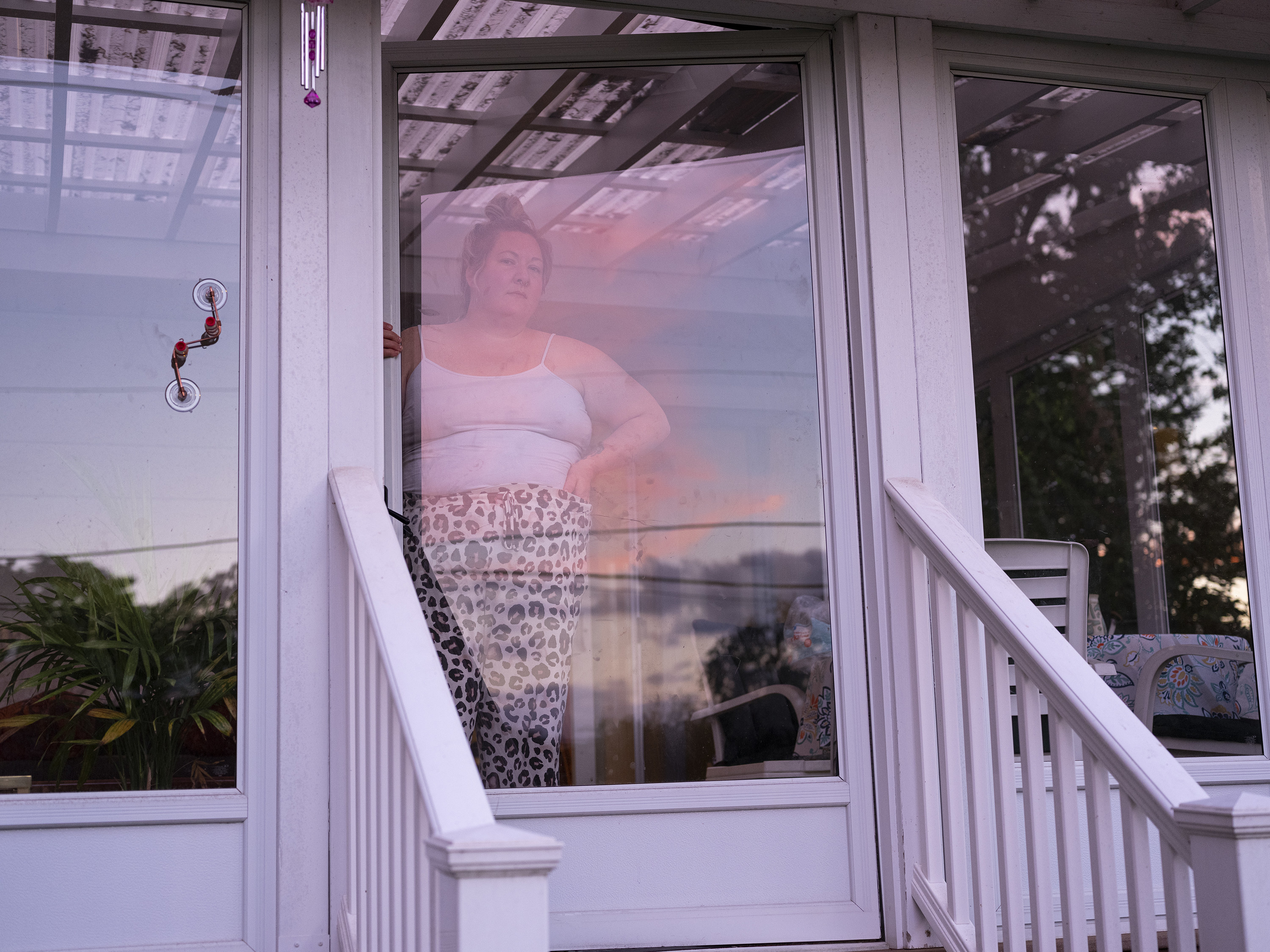
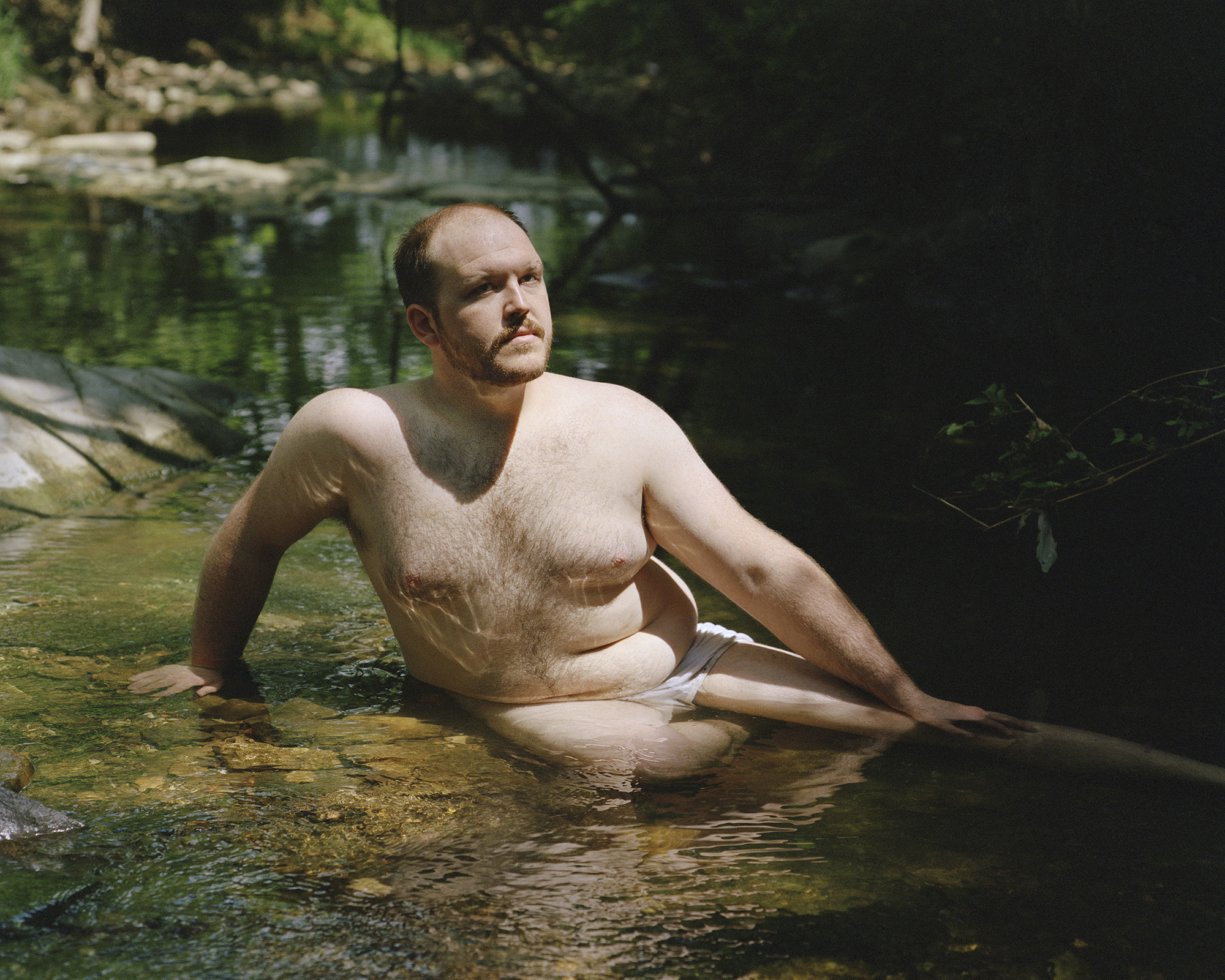
Ashley: After Isla got her MFA, I went to the University of Arkansas school and got my MFA in studio art, but with a focus in photography. A lot of my work has to do with our domestic space, figuring out our relationship and my relationship to other people, as well as my relationship to myself. I was raised in the Church of Jesus Christ of Latter-day Saints, also known as Mormons, and then left. I’ve been figuring out who I am without the church for years.
Pretransition, Isla was very quiet, and photography was a way to study her without sitting down and staring at her and asking her a ton of questions. We would go on nature walks, and I would take pictures as we went. That's how that project of us taking pictures of each other started. It was a part of my thesis work, of leaving the church and my self-discovery, who I was without the church, who I wanted to be, and who I wanted to be in our relationship.
In those three years while we were working on the project, Isla came out as nonbinary. Toward the end of my thesis year, she came out to me as transgender. As we dealt with it, we still took photographs. Isla's growing awareness of her own gender identity allowed her to be a more active participant, especially in Starter Home.
Isla: Initially, I submitted to the photographs because I cared about Ash and wanted to support them, but I was a much more passive participant. I would improvise a little bit in the studio, but I was reluctant, perhaps scared, to engage with the process.
As I saw the photos that Ashley took, I started to realize that there were things in there that I liked, and I was like, What is that? Who is that? The way that they photograph me, there's a lot of softness and vulnerability, and that created a really positive feedback loop. I continued to unpack my feelings and played a little more active role with one of our first truly collaborative photos, “Womanless Wedding,” where I squeezed into a thrift store wedding dress.
When I realized I was trans and came out, it began to evolve into a more deliberate but also edifying project to try to present myself in the way that I feel like deep down, this is the person I could be.
Ashley: We are building a new relationship and a new marriage in a domestic space that we had never been in before. Queer, trans, what does that look like outside of the church and traditional gender presentation? Once we started working through it, we realized that a lot of these issues were always there in our marriage, and this had allowed us to work with them on the surface.
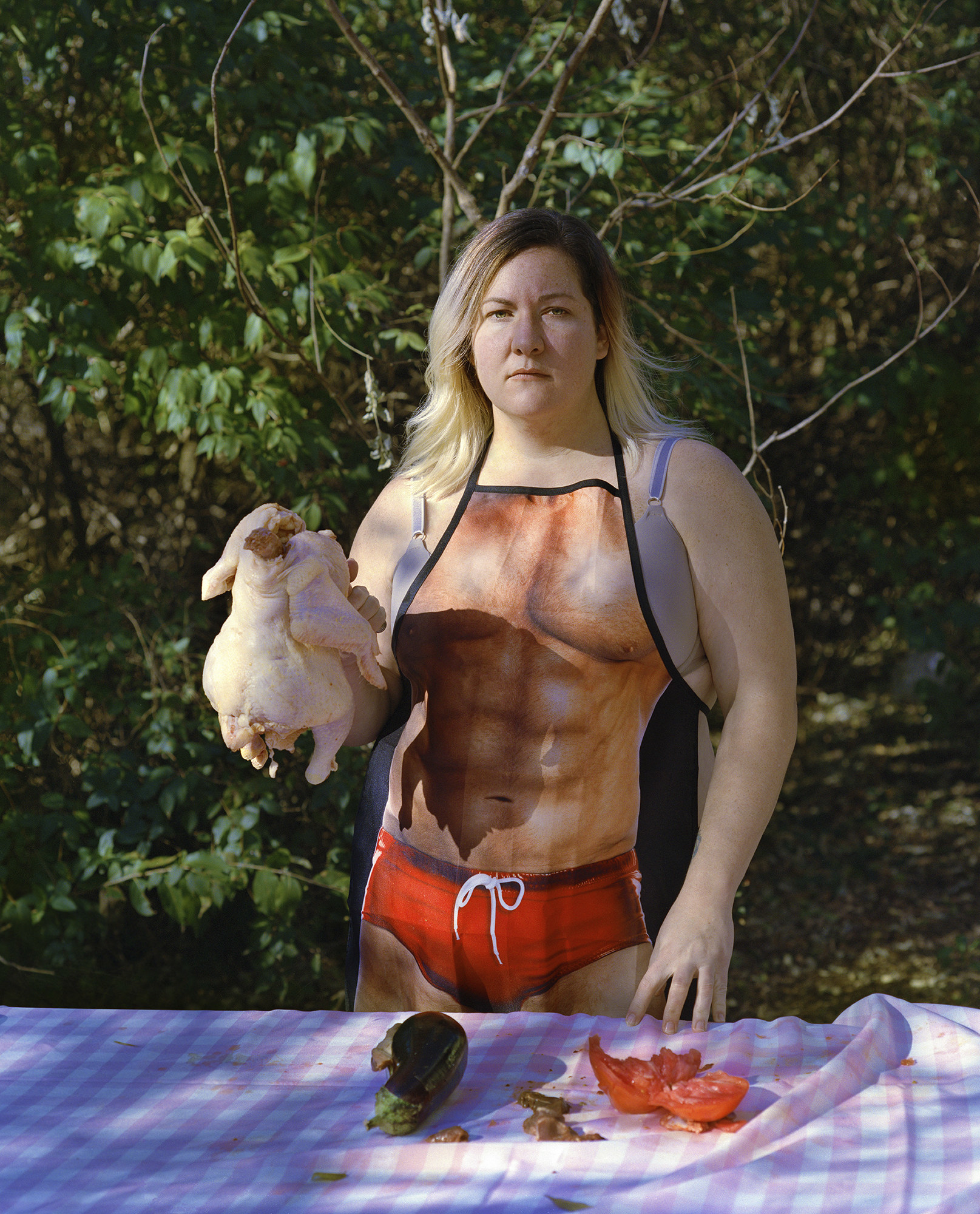
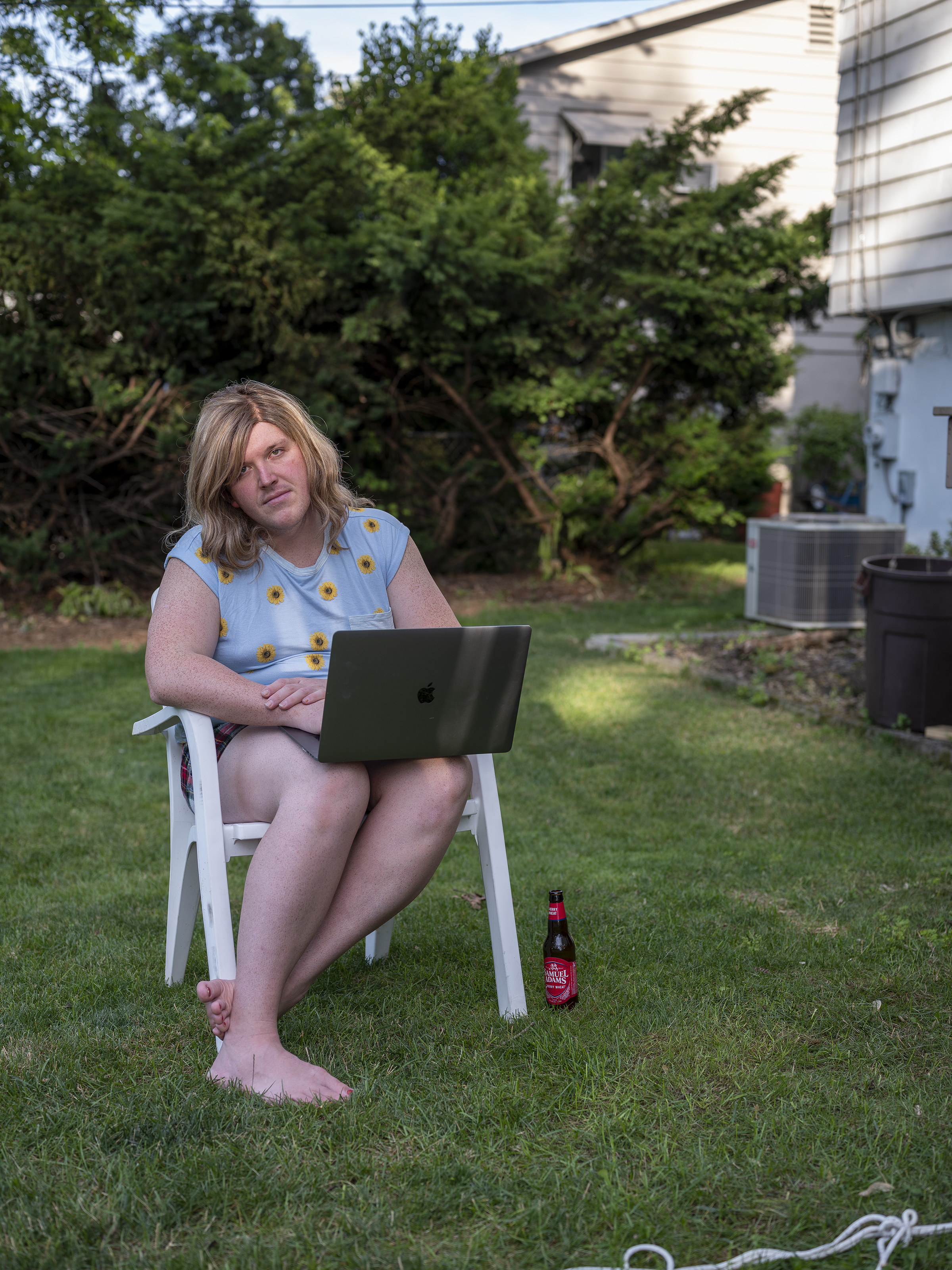
Isla: Transitioning has been a lot. I am pretty single-minded and oblivious, so it took me forever to realize because I would always find something else to project all my anxieties into. For a while that was my art. When we were living in Arkansas, I was possessed in the studio. In the pandemic I had to give up my studio, so I didn't have the same sort of outlet or distraction. Removing the studio component allowed me to stay awake staring at the ceiling all night and thinking about who I really was. I joke about it, but it was really over a few sleepless nights when I realized [that I was transgender].
I told Ashley, and we went to town and I bought a pair of shoes and borrowed some of Ashley's shorts and we went out on the town. We went to lunch and to a museum, and I felt unselfconscious for the first time in my life, I felt great. I looked a hot mess, but I felt amazing.
Ashley: She did not [look a mess]!
Isla: After we moved to Pennsylvania, we were living with my mom and we were looking for work. I started working with a therapist, because this is a big thing and I wanted to be sure. From coming out to Ashley to coming out to family was a few months, and I came out publicly in March 2021 on Trans Day of Visibility, and it's been full steam ahead.
There's a lot of unlearning about the expectations — the same ones we have in the home, I constructed my whole life around them. The idea that I needed to derive my worth or prestige from an academic posting at a great school, I realized that I don't actually need that. It's been a lot of sort of discovering those types of things, and I put so much pressure on myself, around art and around everything, how I present, it's been nice to not feel that external pressure and to be a little more authentic.
Isla: There were so many expectations that were placed on us that we performed because we felt like it was expected or encouraged. Cooking, cleaning, taking care of the finances.
Ashley: We realized how unhappy we were, and it was a big part of taking on new roles of representation. We want to show people a space like this and what it looks like.
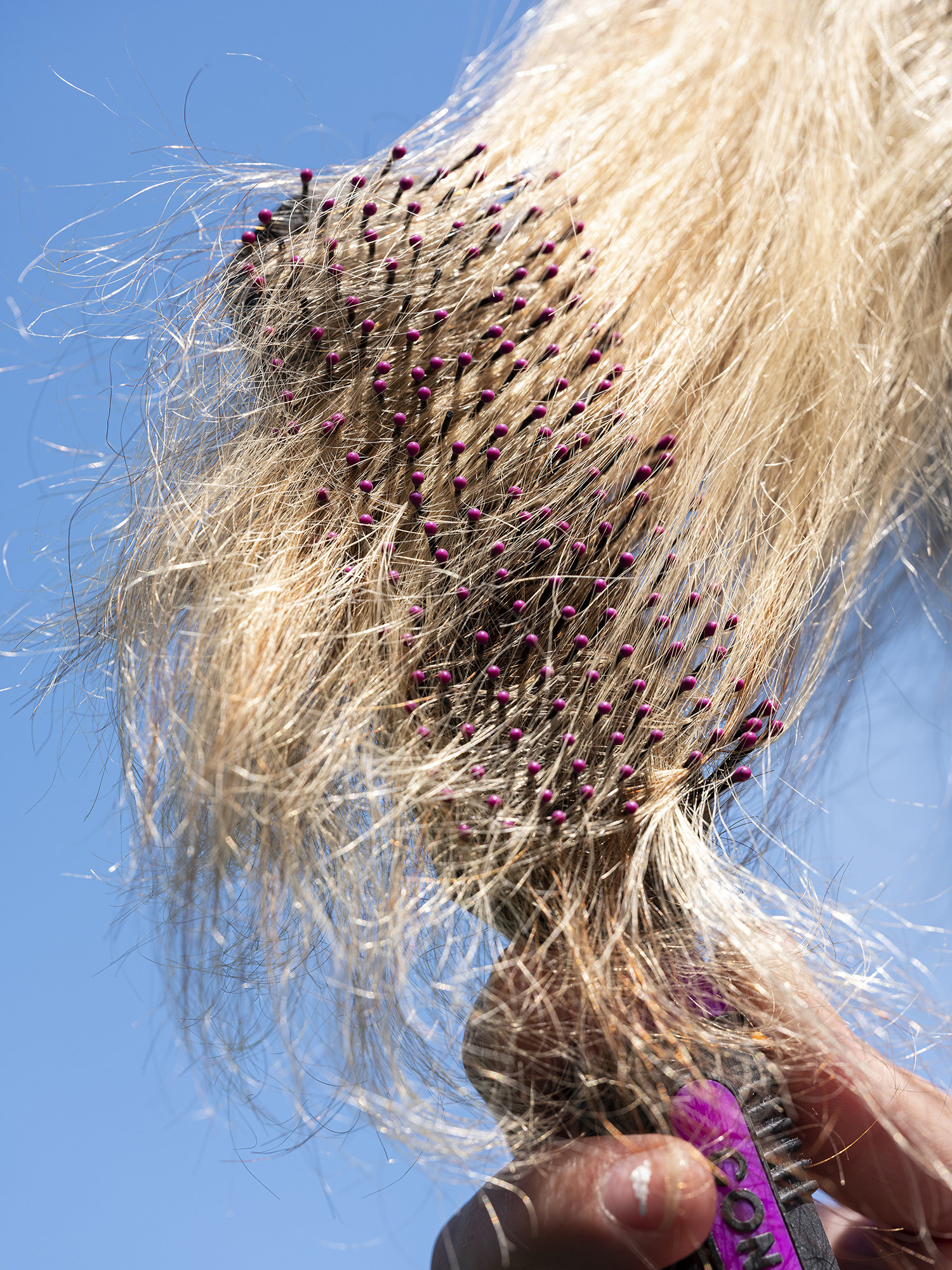

Isla: Expectations and pressures around gender roles were underlying all of the conflict in our marriage. We would fight about things like money, with Ashley and her family having this expectation that I would control the finances and mete out money to her as needed. My reluctance to occupy the patriarchal head of household role was less about the role than the patriarchal association. The same could be said for my lacking contributions to cleaning and all the pressure Ashley feels to keep a clean house.
Isla: It's so frustrating when you're trying to find stories about yourself and what you see is cliché, reductive, or bad, and it can feel really lonely.
We try to be authentic and avoid cliché as much as possible, and try to share and photograph those moments that are not so easily readable. The moments when you're feeling insecure or not sure and like you're just on the precipice of something new. The highest compliment we can get is when someone sees their experience in our art.
Ashley: We're looking forward to continuing Starter Home through the seasonal changes. It's so much about us figuring out who we are inside the house. I think that will happen as we stay in the house and keep growing. In the future, I would like to have an exhibition. We see it in a space in the future where we can create a space for queer expression. It's what I want to do and bring in some more installation elements.
Isla: I would say that I am most excited to start arranging our work in a book or zine form. I have an ongoing fascination with family albums and their gendered history, and it seems like the perfect vessel for a lot of the ideas we are exploring.
